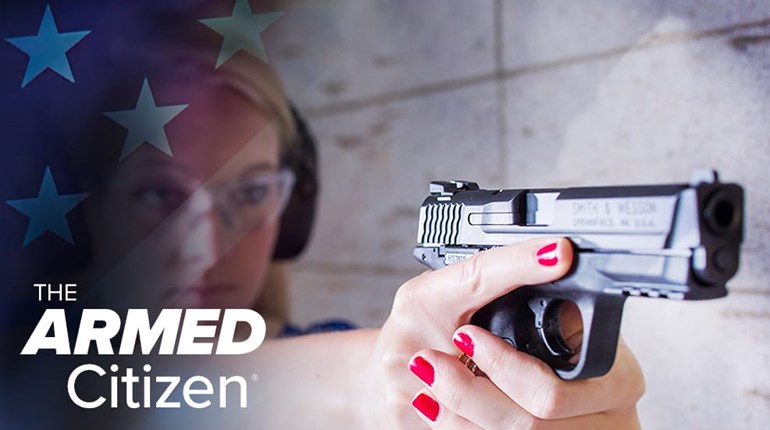
There’s a lot to love about summer. Longer days and warmer temperatures mean more opportunities to get outside and shake off the winter blues, and you won’t have to spend 15 minutes bundling up and scraping your car windshield just to make a run to the store for Diet Coke and chips. But if you carry a concealed firearm summer presents its own kind of challenges—specifically, how to keep your concealed sidearm concealed. Single layers of light clothing make it very difficult to hide a double-stack semiauto against your side, and donning a down jacket in July—which would in fact make carrying concealed much simpler—is going to be a dead giveaway that you’re trying to hide a gun.
Difficult as it may be, you can carry a concealed firearm in the summer without resorting to bundling up in skiwear. You can even remain relatively comfortable as you carry. This season, don’t divulge your hidden handgun by making the wrong sartorial decisions. These five tips will keep your sidearm out of sight—even on those sweltering summer days.
1. Experiment with Holsters, Guns and Carry Positions:
As often as I carry I’m always trying out new holsters and guns. And, over time, I’ve figured out which gun/holster combinations are best for maximum concealment. For starters, look for a holster that’s easy to hide—some tuckable model or perhaps a belly band. Even a light, basic Kydex shell with a clip works well. These minimalist designs align themselves perfectly with compact .380 semiautos, single-stack 9mms and trim revolvers (three great gun options for summer carry). But rarely is there a one-size-fits-all carry method. I’m not saying you need to buy a half-dozen different holsters (you probably will, though) but take the time to find something that fits close to your body.
2. Don’t Constantly Fiddle With Your Carry Rig:
When I was a kid a buddy of mine got braces, and for the first week he had them the guy never stopped making odd faces while he tried to adjust to life with his new hardware. I’m reminded of this every time I see a CCW permit holder adjusting and readjusting their belt and pants and constantly checking to be certain that their gun isn’t visible. My gosh, they could practically carry a crossdraw hunting holster on the outside of their clothes and draw less attention. Some people subconsciously adjust their carry gun regularly and this draws the attention of everyone, it seems, except them. Find a good rig and roll with it.
3. Consider a Cover Garment:
The right cover garment can look natural in summer and won’t make you sweat excessively. Ditch the wool jacket, sweatshirt and work coat that were go-to garments in winter. Instead, opt for a light, short-sleeved button-up shirt or a thin vest. These clothes look perfectly natural and they won’t make you sweat excessively. My favorite option is to wear a lightweight t-shirt that’s tucked-in behind the holster, something made of breathable material, and to top that with a short-sleeved button-up. The button-up design allows me to draw the gun quickly with a single sweep of the hand. If the wind picks up and I face the risk of having the shirt blow open and reveal my carry gun to the world I can simply button the shirt.
4. Fool the Eye:
The worst possible shirt to wear when carrying concealed is one that is a plain color. This will make any unnatural line stand in stark contrast to the body and will reveal that you’re carrying a firearm. The best option is to choose a shirt with a broken pattern, something that, by its very nature, distracts the eye and effectively hides a firearm. Don’t think that what I’m saying holds water? Try it for yourself in front of a mirror. When you wear a shirt with a broken pattern—a Hawaiian shirt is one example—you’re far less likely to see every unnatural line the same way you would with a solid color shirt. You can further distract the eye by wearing a hat or shoes that has a strong color. A bright ball cap or neon running shoes will distract anyone who isn’t specifically looking for a firearm.
5. Consider Movement, Sizing and Material:
Choose a cover garment that isn’t excessively tight. The top shirt should be able to move freely, and it should do so with enough gap between the shirt and your body that every twist or turn doesn’t cause your firearm to print. If a garment is loose enough that it moves naturally it’s far less likely that someone will see a firearm underneath. In fact, you’d be quite surprised how much easier it is to hide a relatively large carry gun under a loose-fitting patterned cover garment than it is to conceal a compact gun over tight, monochromatic apparel.
Another key consideration is material. The initial thought might be that you want the lightest material possible, but that causes problems. Namely, every out-of-place line will show and the shirt itself will be far more likely to ball up when you try to clear and draw instead of simply sweeping out of the way as it should.






































